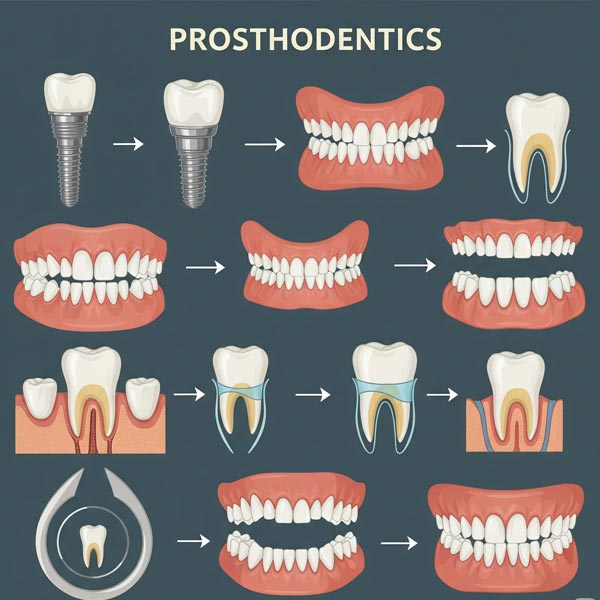Prosthodontics
Prosthodontics is a branch of dentistry dedicated to making replacements for missing or damaged teeth. Common prosthodontic treatments include dentures, dental implants, crowns and bridges
Who needs prosthodontics?
- Missing teeth.
- TMJ pain or dysfunction.
- Mouth or facial pain.
- Cosmetic concerns.
- Obstructive sleep apnea
What is a prosthodontic appliance?
- Full and partial dentures.
- Crowns and bridges.
- Oral splints.
- Night guards for TMJ disorder and sleep apnea
What are the advantages of prosthodontics?
- Repair badly damaged teeth.
- Replace missing teeth
- Improve your bite (the way your teeth fit together).
- Correct TMJ issues.
What are the risks of prosthodontics?
If you notice any warning signs, such as fever or drainage near the treatment site, contact your dentist or prosthodontist right away.
Dental bridges
A dental bridge replaces one or more missing teeth in a row. This dental prosthetic consists of two crowns on either side with artificial teeth (pontics) in between them. Once placed, your natural teeth anchor the crowns, and the pontics fill the gap in your smile.
Dentures
There are two main types of dentures: partial and full. Partial dentures replace several sporadically missing teeth. Full dentures replace a full arch of missing teeth. These removable appliances help restore the function and appearance of your smile.
Inlays and onlays
If a tooth is too damaged for a filling but not damaged enough to warrant a crown, then you might need an inlay or onlay. These custom restorations fit into your tooth structure like tiny puzzle pieces
Dental implants
Dental implants are tiny threaded posts used to replace missing teeth roots. They’re made from surgical-grade titanium or ceramic. Your dental provider places them into your jawbone. Once your implants heal, a prosthodontist can restore them with crowns, bridges or dentures.
If you’re missing most or all of your teeth, there are several removable and nonremovable implant-supported options. Talk to your dentist or prosthodontist to find out which treatment is best for you.



